Polysemy in Modern English Polysemy Is the plurality
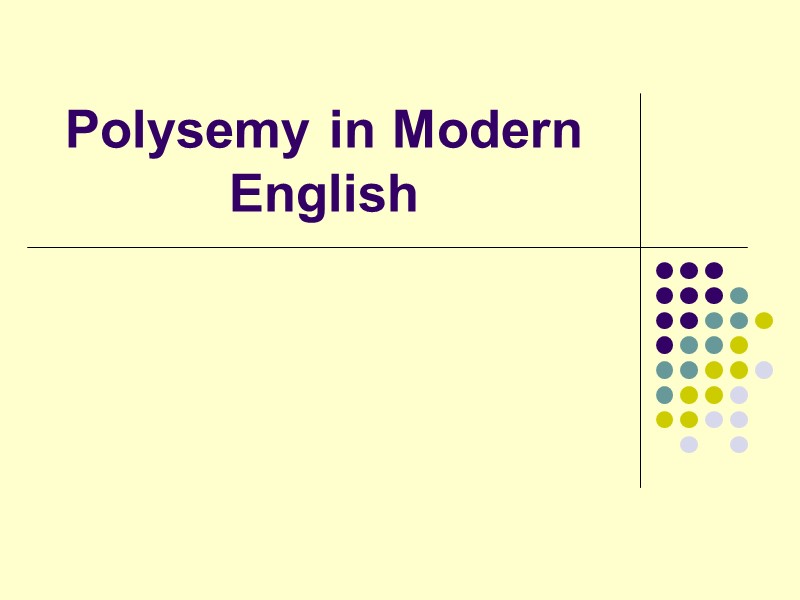
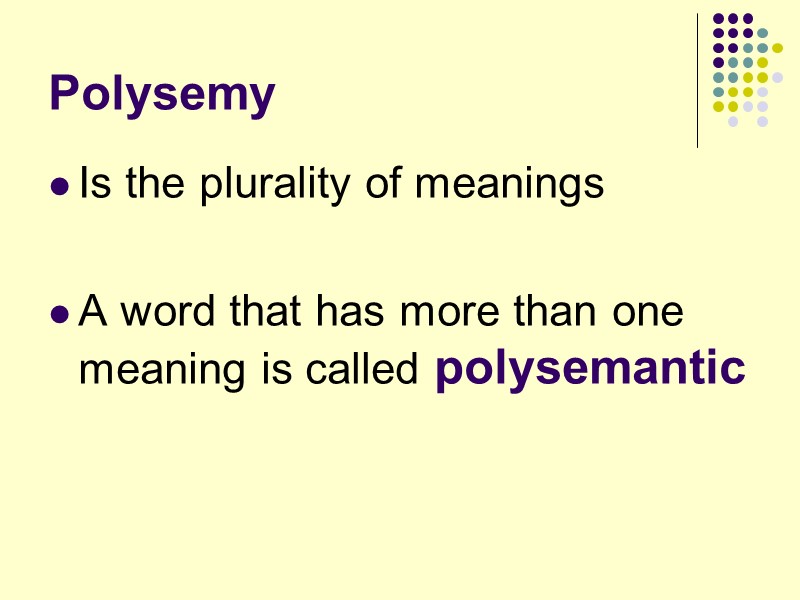
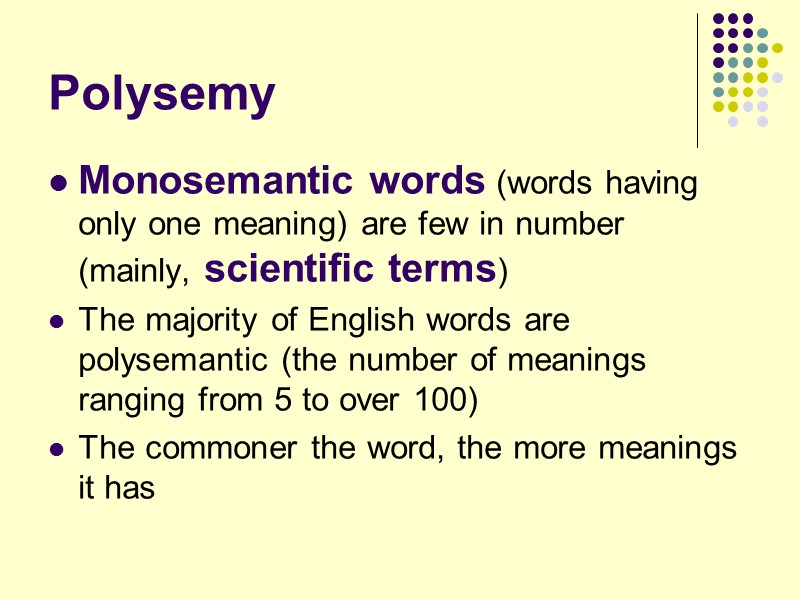
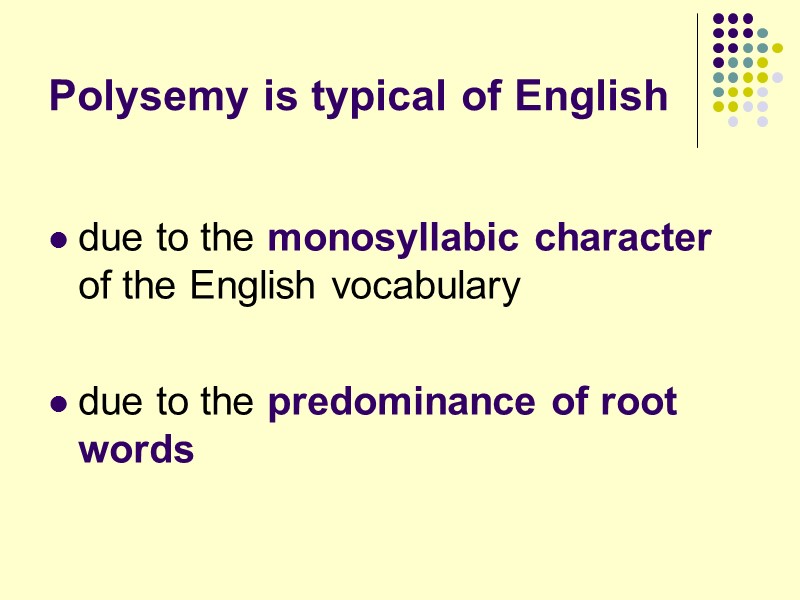
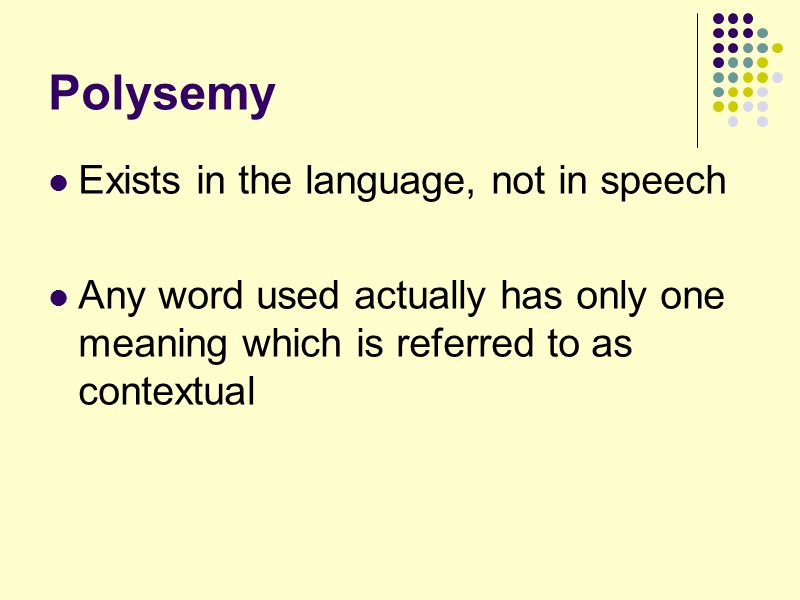
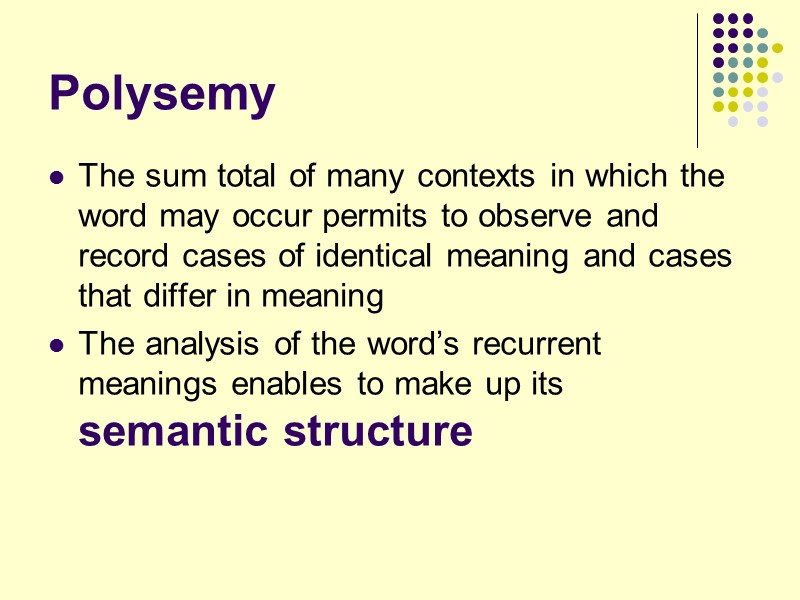
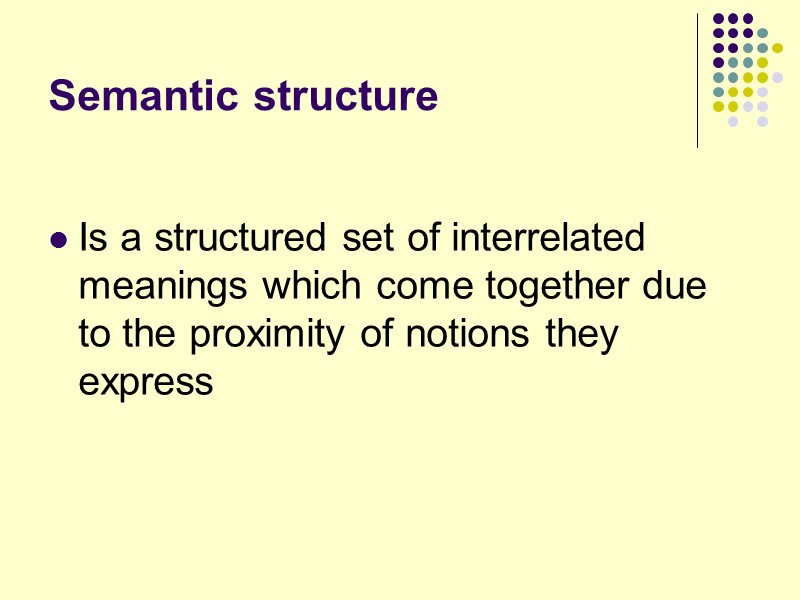
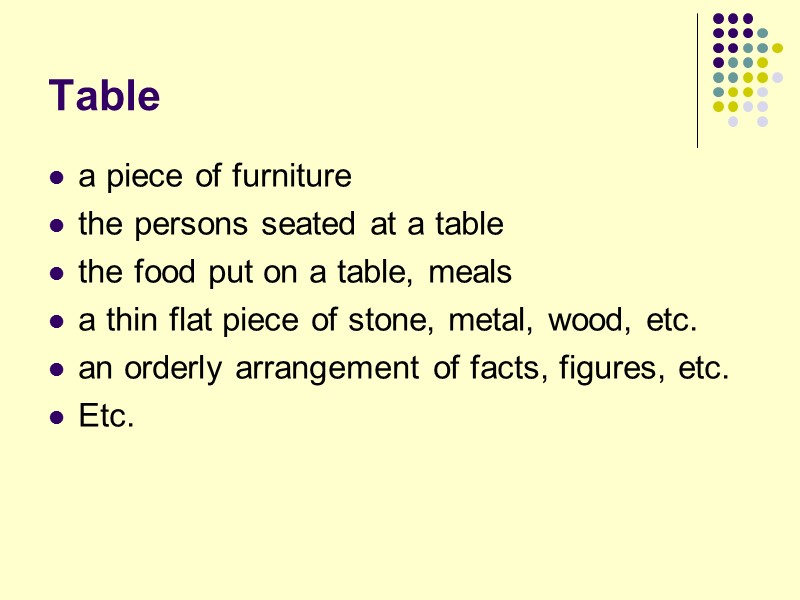
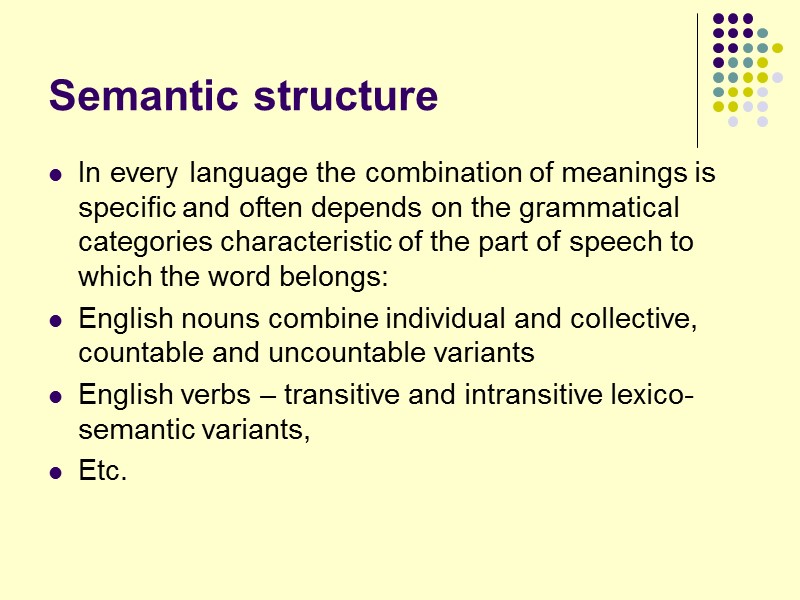
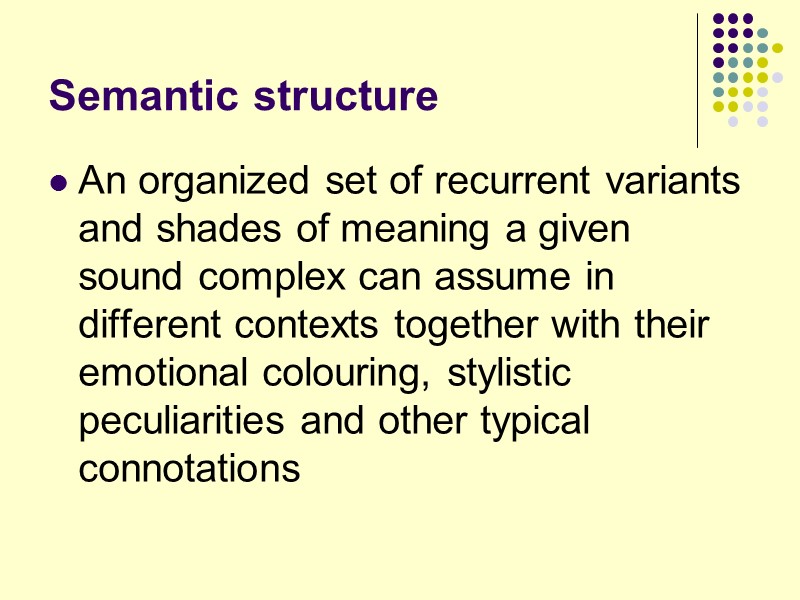
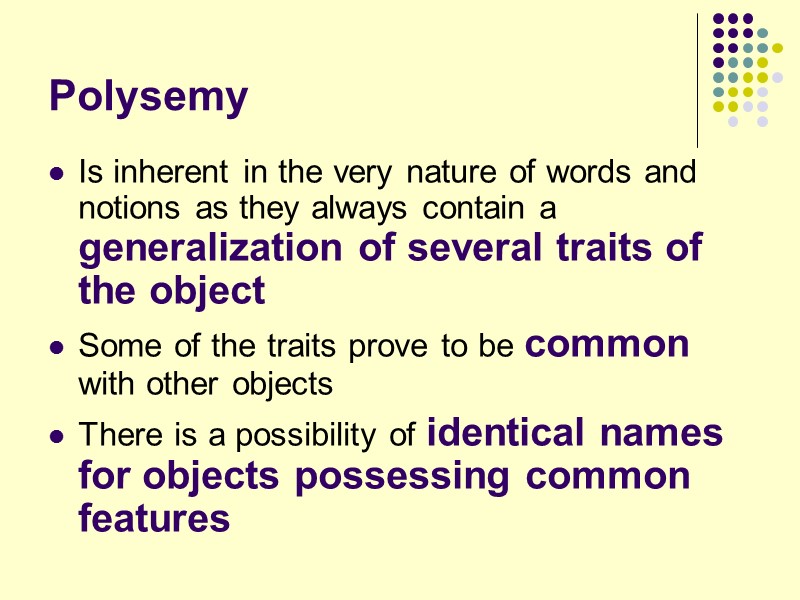
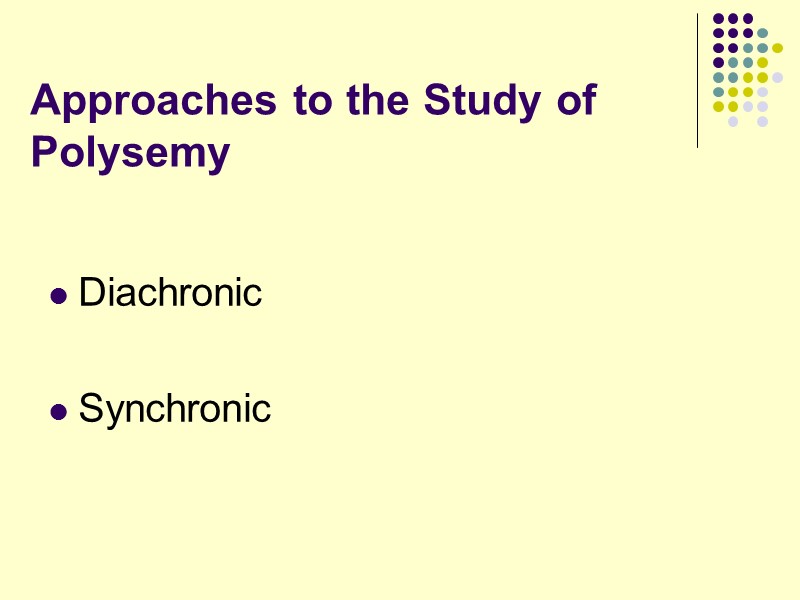
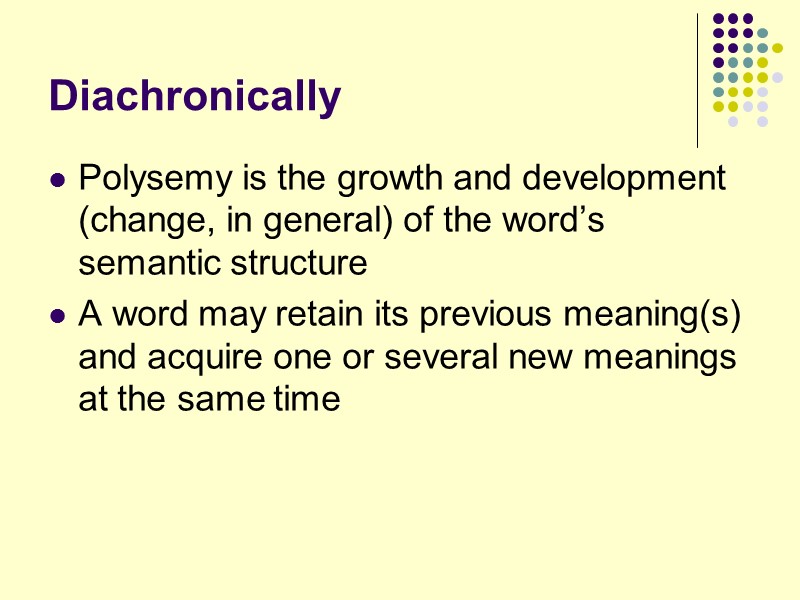
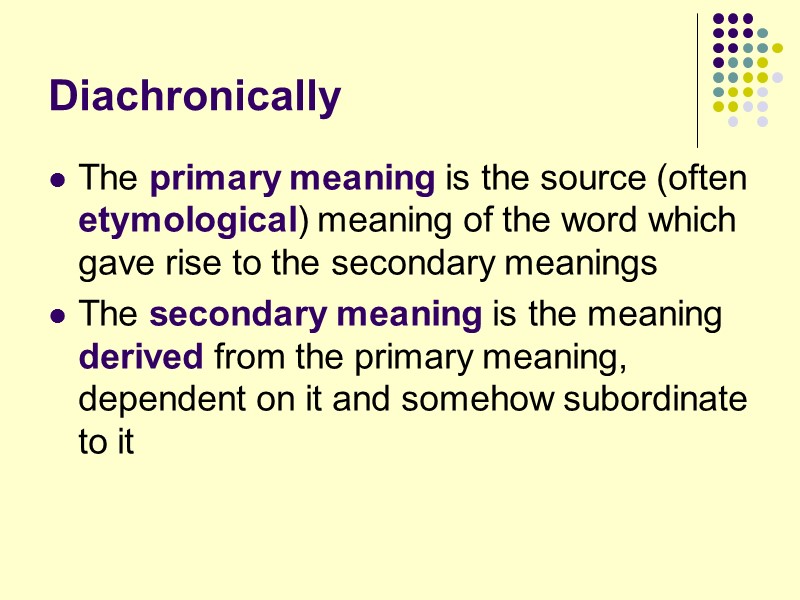
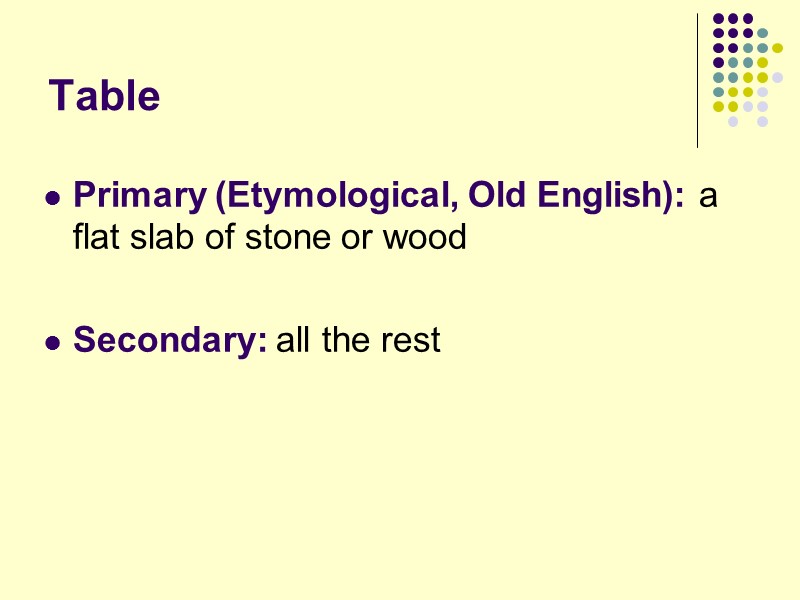
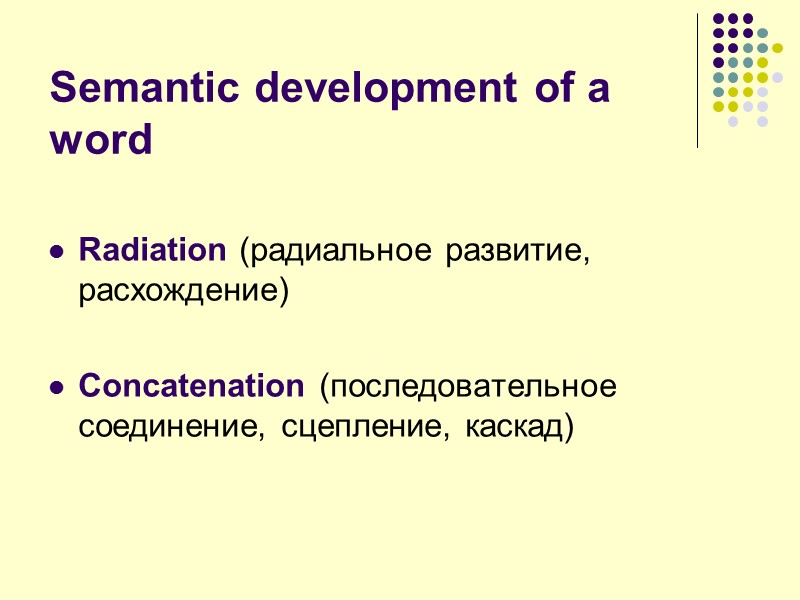
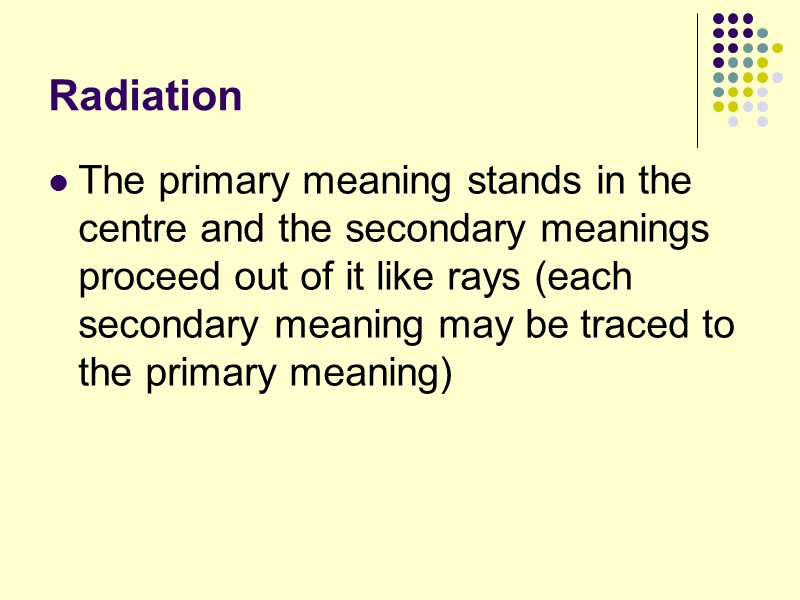
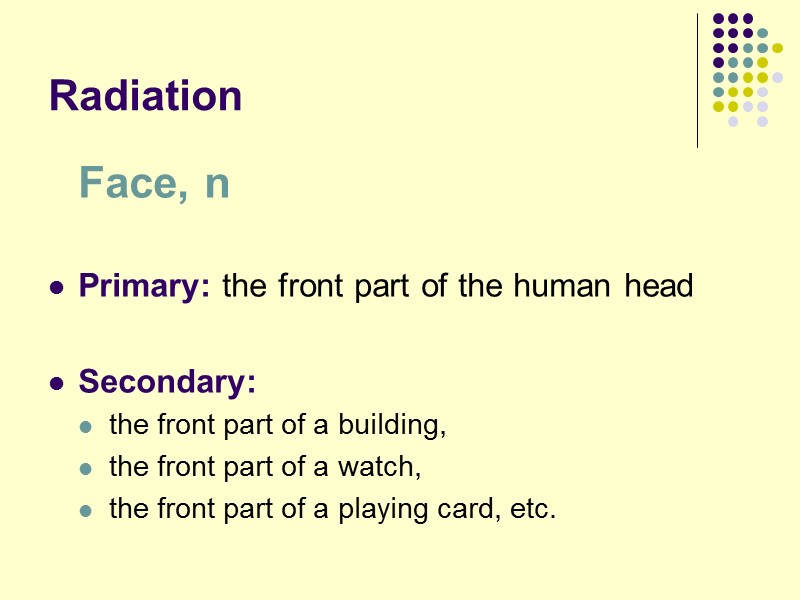
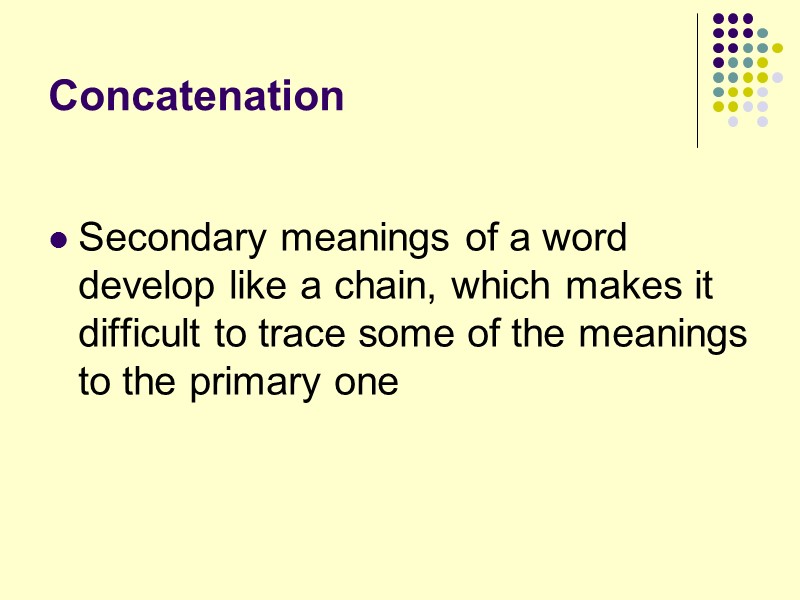
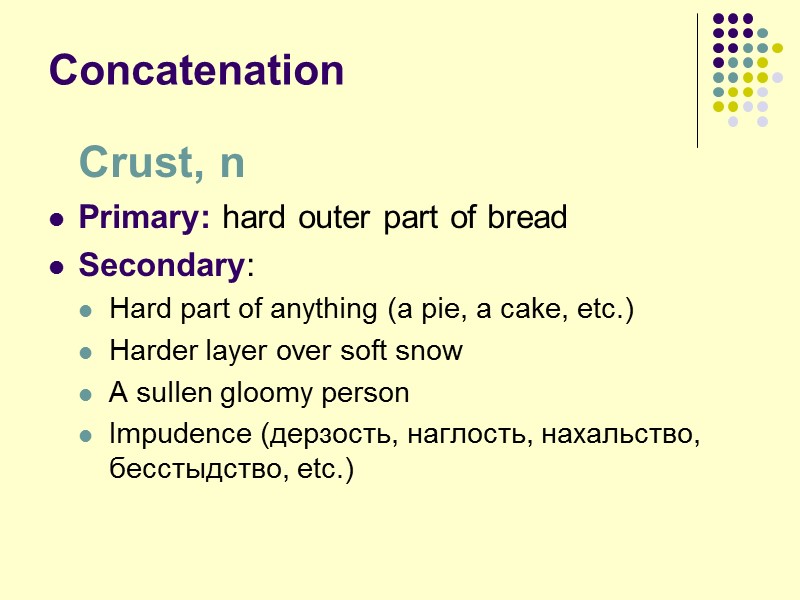
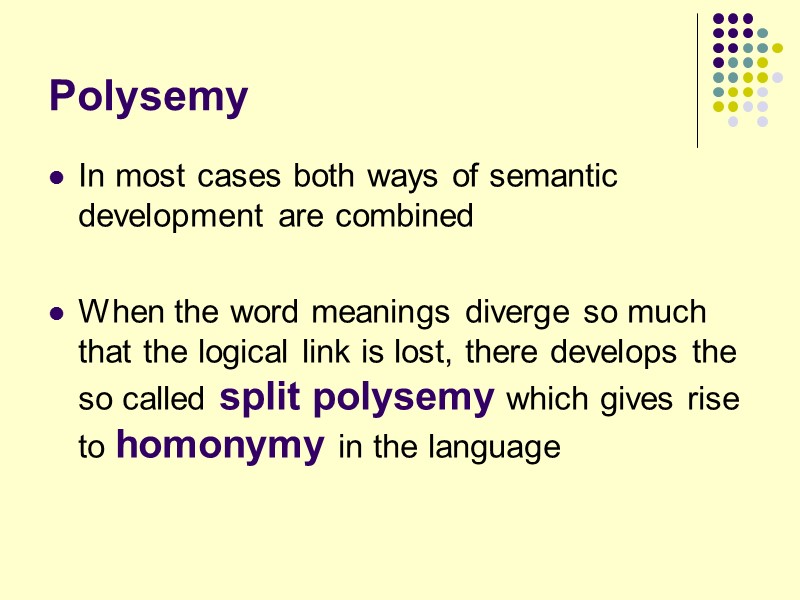
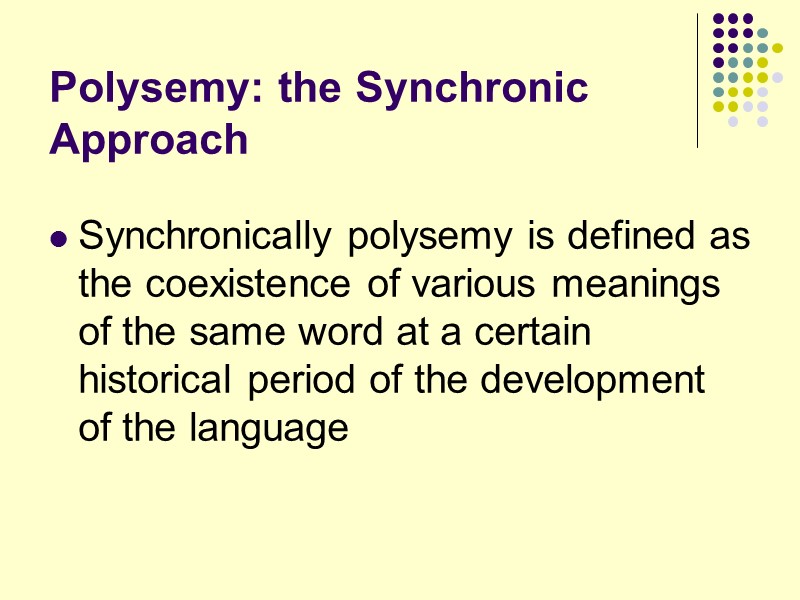
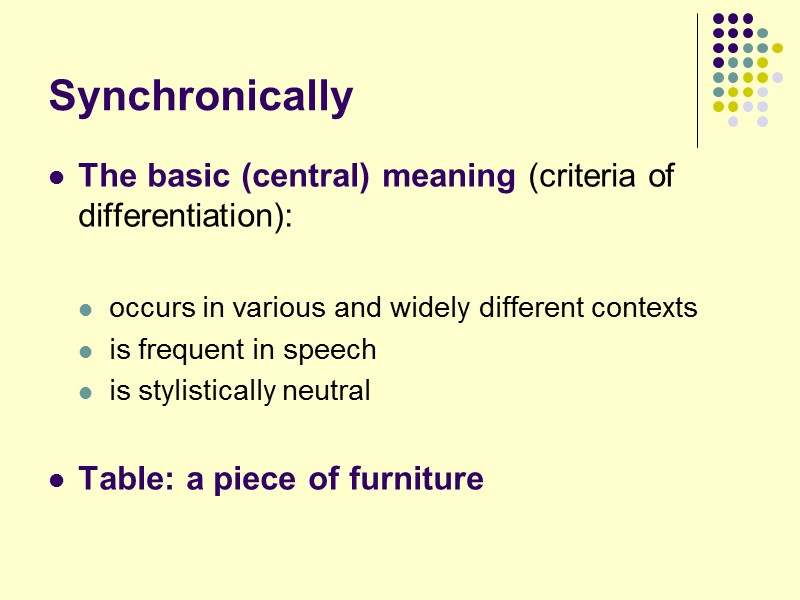

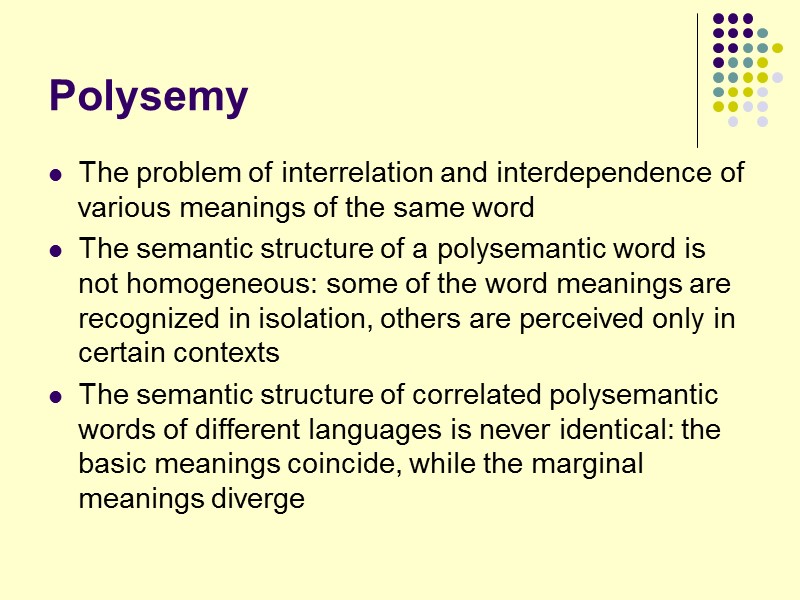
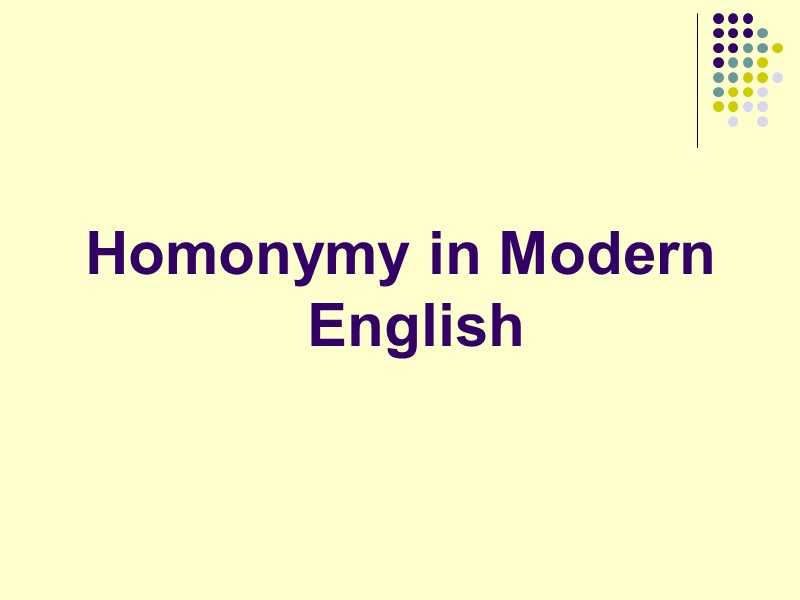
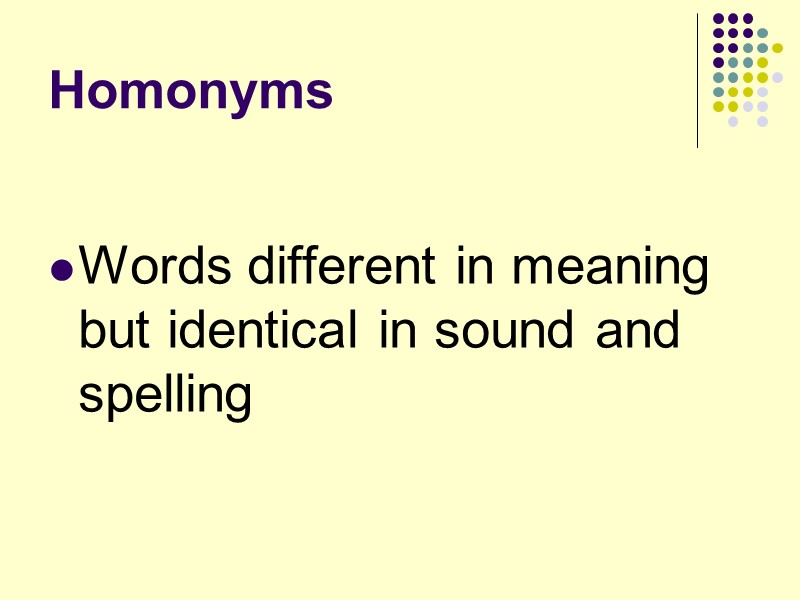

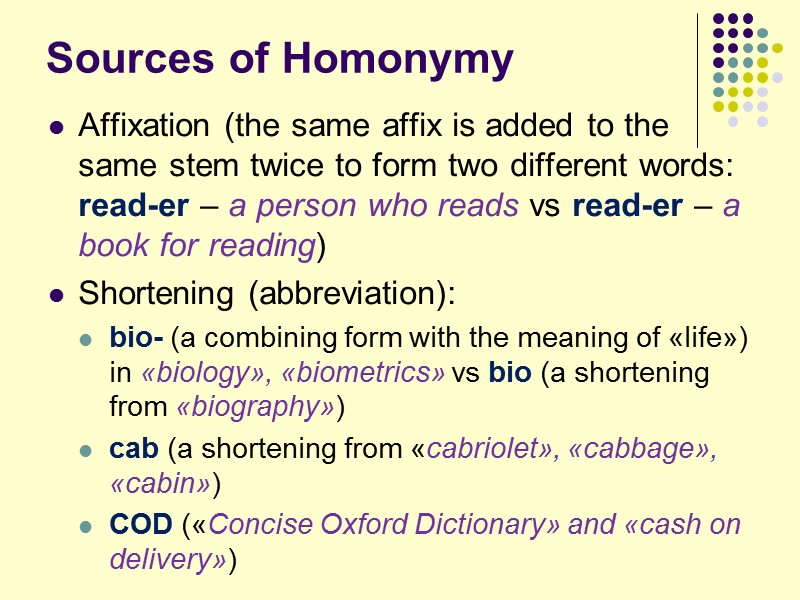
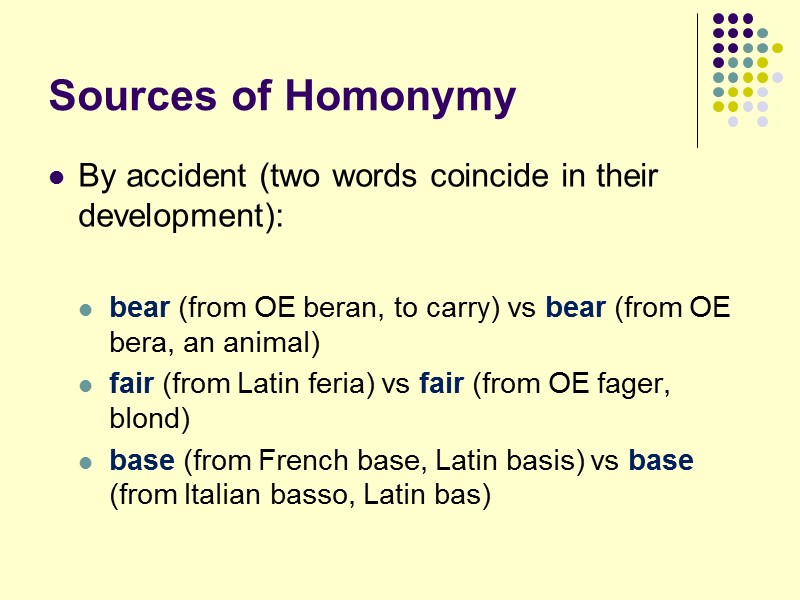
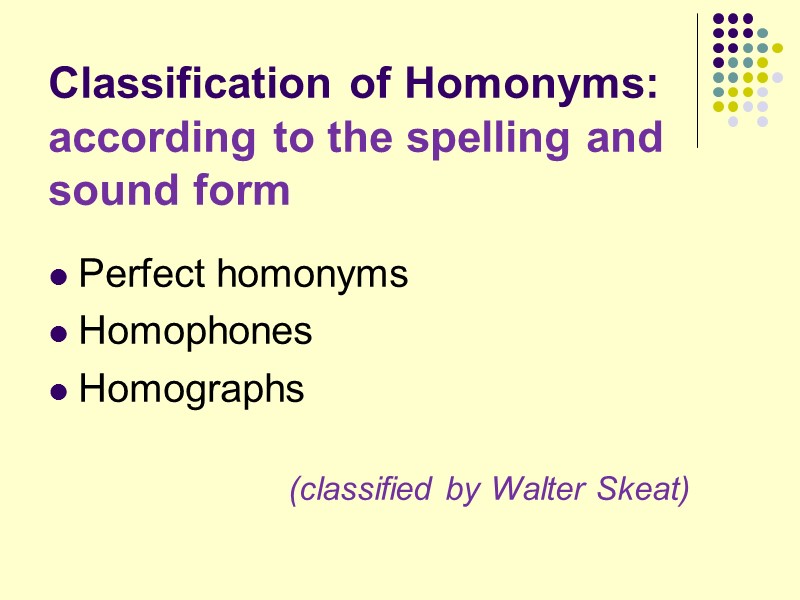
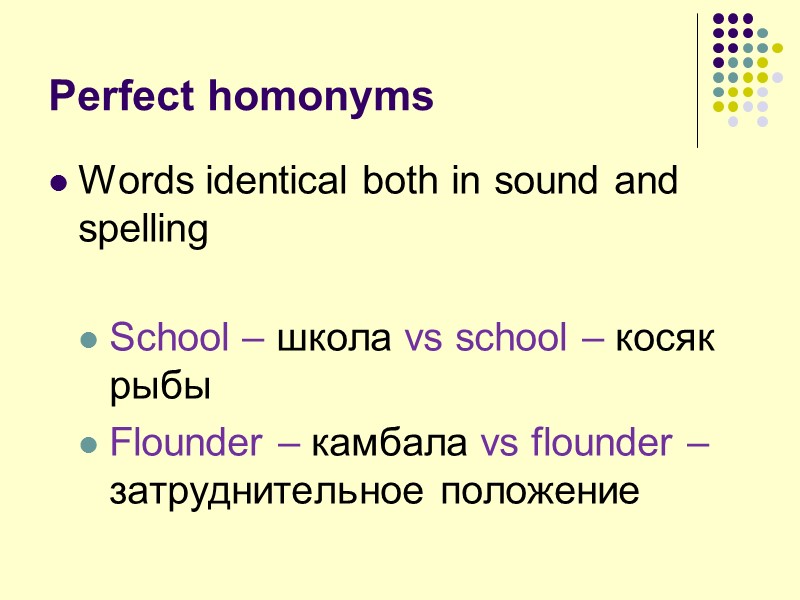
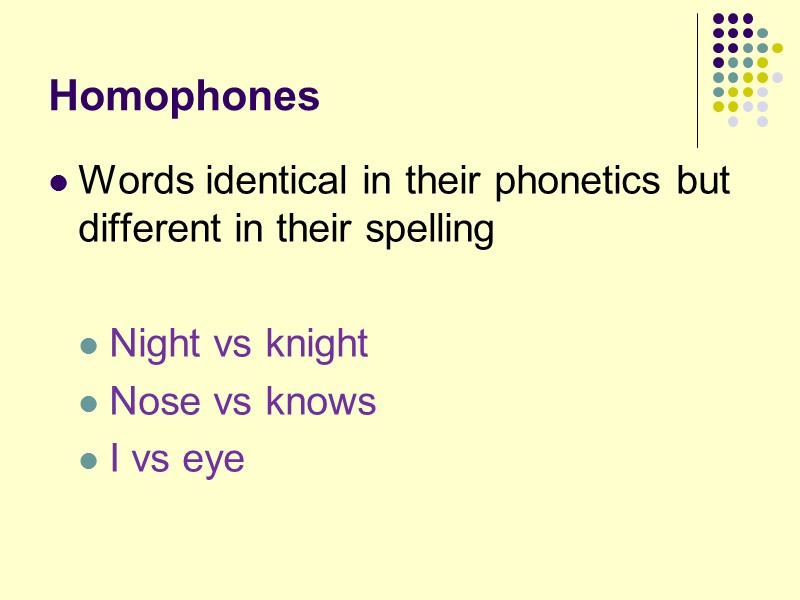
![Homographs Words identical in their spelling but different in their phonetics Bow [bau] Homographs Words identical in their spelling but different in their phonetics Bow [bau]](https://present5.com/presentacii-2/20171211\31476-8_polysemy_and_homonymy_in_modern_english.ppt\31476-8_polysemy_and_homonymy_in_modern_english_34.jpg)
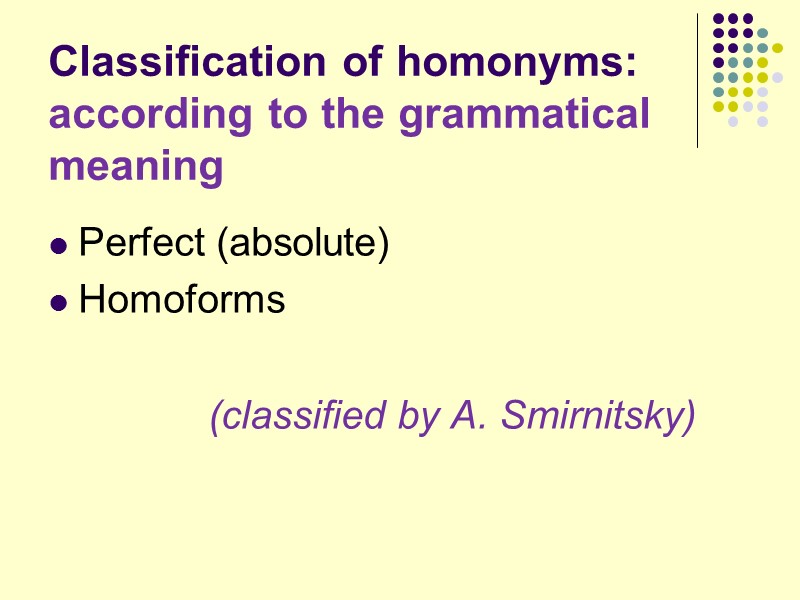
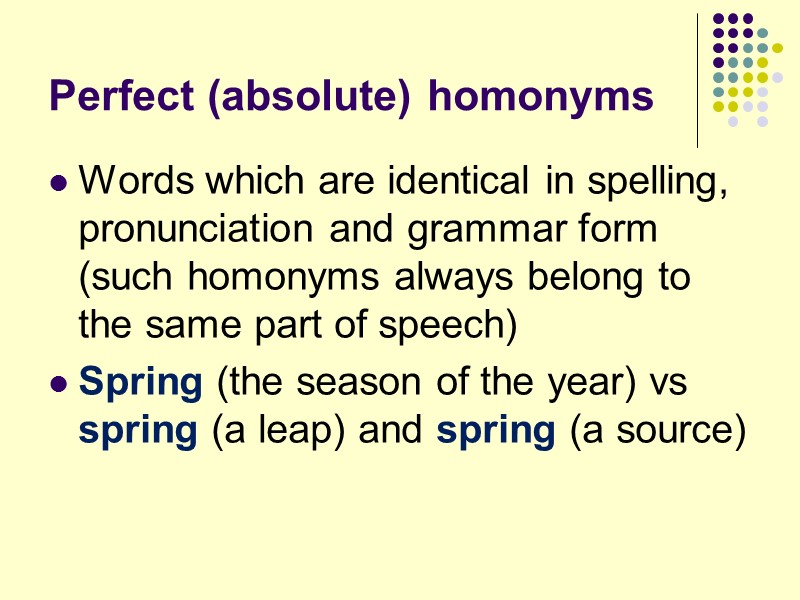
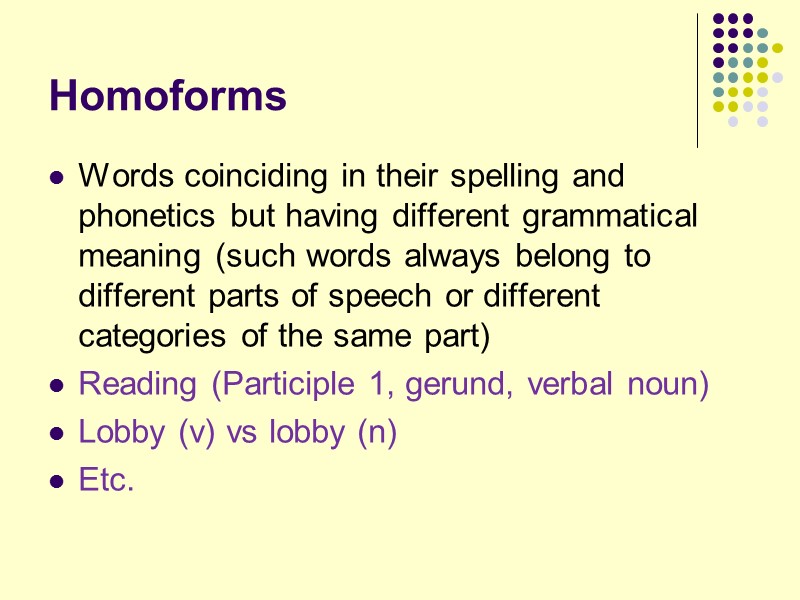
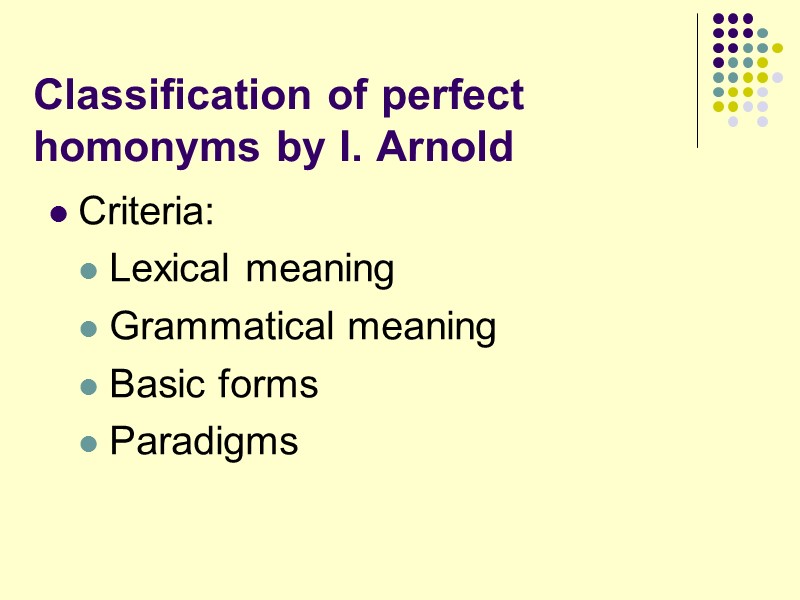
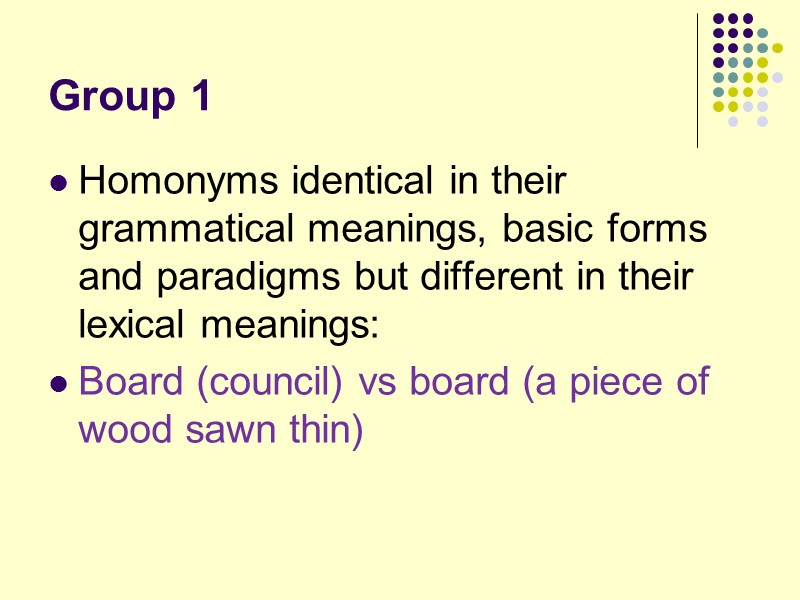

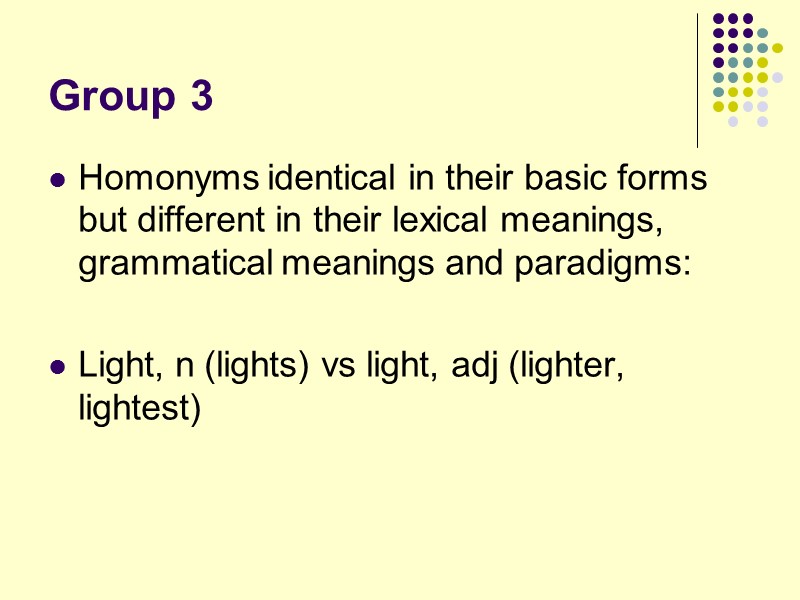
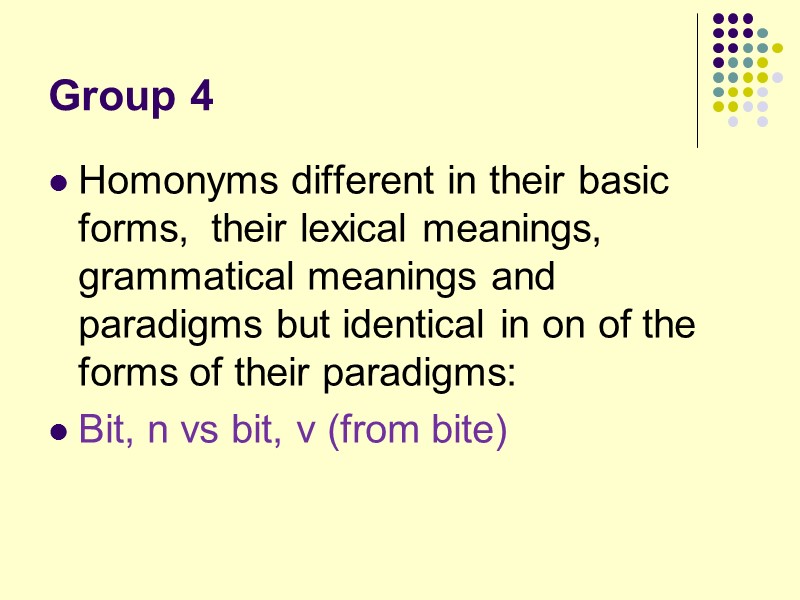
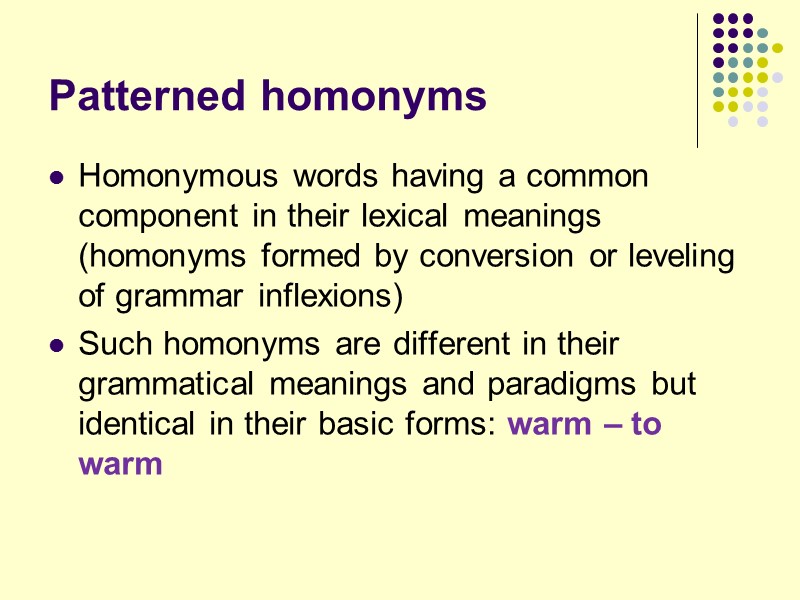

31476-8_polysemy_and_homonymy_in_modern_english.ppt
- Количество слайдов: 44
 Polysemy in Modern English
Polysemy in Modern English
 Polysemy Is the plurality of meanings A word that has more than one meaning is called polysemantic
Polysemy Is the plurality of meanings A word that has more than one meaning is called polysemantic
 Polysemy Monosemantic words (words having only one meaning) are few in number (mainly, scientific terms) The majority of English words are polysemantic (the number of meanings ranging from 5 to over 100) The commoner the word, the more meanings it has
Polysemy Monosemantic words (words having only one meaning) are few in number (mainly, scientific terms) The majority of English words are polysemantic (the number of meanings ranging from 5 to over 100) The commoner the word, the more meanings it has
 Polysemy is typical of English due to the monosyllabic character of the English vocabulary due to the predominance of root words
Polysemy is typical of English due to the monosyllabic character of the English vocabulary due to the predominance of root words
 Polysemy Exists in the language, not in speech Any word used actually has only one meaning which is referred to as contextual
Polysemy Exists in the language, not in speech Any word used actually has only one meaning which is referred to as contextual
 Polysemy The sum total of many contexts in which the word may occur permits to observe and record cases of identical meaning and cases that differ in meaning The analysis of the word’s recurrent meanings enables to make up its semantic structure
Polysemy The sum total of many contexts in which the word may occur permits to observe and record cases of identical meaning and cases that differ in meaning The analysis of the word’s recurrent meanings enables to make up its semantic structure
 Semantic structure Is a structured set of interrelated meanings which come together due to the proximity of notions they express
Semantic structure Is a structured set of interrelated meanings which come together due to the proximity of notions they express
 Table a piece of furniture the persons seated at a table the food put on a table, meals a thin flat piece of stone, metal, wood, etc. an orderly arrangement of facts, figures, etc. Etc.
Table a piece of furniture the persons seated at a table the food put on a table, meals a thin flat piece of stone, metal, wood, etc. an orderly arrangement of facts, figures, etc. Etc.
 Semantic structure In every language the combination of meanings is specific and often depends on the grammatical categories characteristic of the part of speech to which the word belongs: English nouns combine individual and collective, countable and uncountable variants English verbs – transitive and intransitive lexico-semantic variants, Etc.
Semantic structure In every language the combination of meanings is specific and often depends on the grammatical categories characteristic of the part of speech to which the word belongs: English nouns combine individual and collective, countable and uncountable variants English verbs – transitive and intransitive lexico-semantic variants, Etc.
 Semantic structure An organized set of recurrent variants and shades of meaning a given sound complex can assume in different contexts together with their emotional colouring, stylistic peculiarities and other typical connotations
Semantic structure An organized set of recurrent variants and shades of meaning a given sound complex can assume in different contexts together with their emotional colouring, stylistic peculiarities and other typical connotations
 Polysemy Is inherent in the very nature of words and notions as they always contain a generalization of several traits of the object Some of the traits prove to be common with other objects There is a possibility of identical names for objects possessing common features
Polysemy Is inherent in the very nature of words and notions as they always contain a generalization of several traits of the object Some of the traits prove to be common with other objects There is a possibility of identical names for objects possessing common features
 Approaches to the Study of Polysemy Diachronic Synchronic
Approaches to the Study of Polysemy Diachronic Synchronic
 Diachronically Polysemy is the growth and development (change, in general) of the word’s semantic structure A word may retain its previous meaning(s) and acquire one or several new meanings at the same time
Diachronically Polysemy is the growth and development (change, in general) of the word’s semantic structure A word may retain its previous meaning(s) and acquire one or several new meanings at the same time
 Diachronically The primary meaning is the source (often etymological) meaning of the word which gave rise to the secondary meanings The secondary meaning is the meaning derived from the primary meaning, dependent on it and somehow subordinate to it
Diachronically The primary meaning is the source (often etymological) meaning of the word which gave rise to the secondary meanings The secondary meaning is the meaning derived from the primary meaning, dependent on it and somehow subordinate to it
 Table Primary (Etymological, Old English): a flat slab of stone or wood Secondary: all the rest
Table Primary (Etymological, Old English): a flat slab of stone or wood Secondary: all the rest
 Semantic development of a word Radiation (радиальное развитие, расхождение) Concatenation (последовательное соединение, сцепление, каскад)
Semantic development of a word Radiation (радиальное развитие, расхождение) Concatenation (последовательное соединение, сцепление, каскад)
 Radiation The primary meaning stands in the centre and the secondary meanings proceed out of it like rays (each secondary meaning may be traced to the primary meaning)
Radiation The primary meaning stands in the centre and the secondary meanings proceed out of it like rays (each secondary meaning may be traced to the primary meaning)
 Radiation Face, n Primary: the front part of the human head Secondary: the front part of a building, the front part of a watch, the front part of a playing card, etc.
Radiation Face, n Primary: the front part of the human head Secondary: the front part of a building, the front part of a watch, the front part of a playing card, etc.
 Concatenation Secondary meanings of a word develop like a chain, which makes it difficult to trace some of the meanings to the primary one
Concatenation Secondary meanings of a word develop like a chain, which makes it difficult to trace some of the meanings to the primary one
 Concatenation Crust, n Primary: hard outer part of bread Secondary: Hard part of anything (a pie, a cake, etc.) Harder layer over soft snow A sullen gloomy person Impudence (дерзость, наглость, нахальство, бесстыдство, etc.)
Concatenation Crust, n Primary: hard outer part of bread Secondary: Hard part of anything (a pie, a cake, etc.) Harder layer over soft snow A sullen gloomy person Impudence (дерзость, наглость, нахальство, бесстыдство, etc.)
 Polysemy In most cases both ways of semantic development are combined When the word meanings diverge so much that the logical link is lost, there develops the so called split polysemy which gives rise to homonymy in the language
Polysemy In most cases both ways of semantic development are combined When the word meanings diverge so much that the logical link is lost, there develops the so called split polysemy which gives rise to homonymy in the language
 Polysemy: the Synchronic Approach Synchronically polysemy is defined as the coexistence of various meanings of the same word at a certain historical period of the development of the language
Polysemy: the Synchronic Approach Synchronically polysemy is defined as the coexistence of various meanings of the same word at a certain historical period of the development of the language
 Synchronically The basic (central) meaning (criteria of differentiation): occurs in various and widely different contexts is frequent in speech is stylistically neutral Table: a piece of furniture
Synchronically The basic (central) meaning (criteria of differentiation): occurs in various and widely different contexts is frequent in speech is stylistically neutral Table: a piece of furniture
 Synchronically Minor (marginal) meanings (criteria of differentiation): occur in only a few contexts are infrequent in speech may have a stylistic colouring Table: a group of people seated at a table (to keep the table amused) Table: an orderly arrangement of facts, figures, etc. (table of contents)
Synchronically Minor (marginal) meanings (criteria of differentiation): occur in only a few contexts are infrequent in speech may have a stylistic colouring Table: a group of people seated at a table (to keep the table amused) Table: an orderly arrangement of facts, figures, etc. (table of contents)
 Polysemy The problem of interrelation and interdependence of various meanings of the same word The semantic structure of a polysemantic word is not homogeneous: some of the word meanings are recognized in isolation, others are perceived only in certain contexts The semantic structure of correlated polysemantic words of different languages is never identical: the basic meanings coincide, while the marginal meanings diverge
Polysemy The problem of interrelation and interdependence of various meanings of the same word The semantic structure of a polysemantic word is not homogeneous: some of the word meanings are recognized in isolation, others are perceived only in certain contexts The semantic structure of correlated polysemantic words of different languages is never identical: the basic meanings coincide, while the marginal meanings diverge
 Homonymy in Modern English
Homonymy in Modern English
 Homonyms Words different in meaning but identical in sound and spelling
Homonyms Words different in meaning but identical in sound and spelling
 Sources of Homonymy Split polysemy (divergence of word meanings so that the logical link is lost) Leveling of grammar inflexions (different parts of speech become identical in their outer aspect : care, n from «caru» and care, v from «carian») Conversion (slim – to slim, water – to water, etc.)
Sources of Homonymy Split polysemy (divergence of word meanings so that the logical link is lost) Leveling of grammar inflexions (different parts of speech become identical in their outer aspect : care, n from «caru» and care, v from «carian») Conversion (slim – to slim, water – to water, etc.)
 Sources of Homonymy Affixation (the same affix is added to the same stem twice to form two different words: read-er – a person who reads vs read-er – a book for reading) Shortening (abbreviation): bio- (a combining form with the meaning of «life») in «biology», «biometrics» vs bio (a shortening from «biography») cab (a shortening from «cabriolet», «cabbage», «cabin») COD («Concise Oxford Dictionary» and «cash on delivery»)
Sources of Homonymy Affixation (the same affix is added to the same stem twice to form two different words: read-er – a person who reads vs read-er – a book for reading) Shortening (abbreviation): bio- (a combining form with the meaning of «life») in «biology», «biometrics» vs bio (a shortening from «biography») cab (a shortening from «cabriolet», «cabbage», «cabin») COD («Concise Oxford Dictionary» and «cash on delivery»)
 Sources of Homonymy By accident (two words coincide in their development): bear (from OE beran, to carry) vs bear (from OE bera, an animal) fair (from Latin feria) vs fair (from OE fager, blond) base (from French base, Latin basis) vs base (from Italian basso, Latin bas)
Sources of Homonymy By accident (two words coincide in their development): bear (from OE beran, to carry) vs bear (from OE bera, an animal) fair (from Latin feria) vs fair (from OE fager, blond) base (from French base, Latin basis) vs base (from Italian basso, Latin bas)
 Classification of Homonyms: according to the spelling and sound form Perfect homonyms Homophones Homographs (classified by Walter Skeat)
Classification of Homonyms: according to the spelling and sound form Perfect homonyms Homophones Homographs (classified by Walter Skeat)
 Perfect homonyms Words identical both in sound and spelling School – школа vs school – косяк рыбы Flounder – камбала vs flounder – затруднительное положение
Perfect homonyms Words identical both in sound and spelling School – школа vs school – косяк рыбы Flounder – камбала vs flounder – затруднительное положение
 Homophones Words identical in their phonetics but different in their spelling Night vs knight Nose vs knows I vs eye
Homophones Words identical in their phonetics but different in their spelling Night vs knight Nose vs knows I vs eye
![>Homographs Words identical in their spelling but different in their phonetics Bow [bau] >Homographs Words identical in their spelling but different in their phonetics Bow [bau]](https://present5.com/presentacii-2/20171211\31476-8_polysemy_and_homonymy_in_modern_english.ppt\31476-8_polysemy_and_homonymy_in_modern_english_34.jpg) Homographs Words identical in their spelling but different in their phonetics Bow [bau] – поклон vs bow [bou] – лук Tear [tia] – слеза vs tear [tea] – рвать на части
Homographs Words identical in their spelling but different in their phonetics Bow [bau] – поклон vs bow [bou] – лук Tear [tia] – слеза vs tear [tea] – рвать на части
 Classification of homonyms: according to the grammatical meaning Perfect (absolute) Homoforms (classified by A. Smirnitsky)
Classification of homonyms: according to the grammatical meaning Perfect (absolute) Homoforms (classified by A. Smirnitsky)
 Perfect (absolute) homonyms Words which are identical in spelling, pronunciation and grammar form (such homonyms always belong to the same part of speech) Spring (the season of the year) vs spring (a leap) and spring (a source)
Perfect (absolute) homonyms Words which are identical in spelling, pronunciation and grammar form (such homonyms always belong to the same part of speech) Spring (the season of the year) vs spring (a leap) and spring (a source)
 Homoforms Words coinciding in their spelling and phonetics but having different grammatical meaning (such words always belong to different parts of speech or different categories of the same part) Reading (Participle 1, gerund, verbal noun) Lobby (v) vs lobby (n) Etc.
Homoforms Words coinciding in their spelling and phonetics but having different grammatical meaning (such words always belong to different parts of speech or different categories of the same part) Reading (Participle 1, gerund, verbal noun) Lobby (v) vs lobby (n) Etc.
 Classification of perfect homonyms by I. Arnold Criteria: Lexical meaning Grammatical meaning Basic forms Paradigms
Classification of perfect homonyms by I. Arnold Criteria: Lexical meaning Grammatical meaning Basic forms Paradigms
 Group 1 Homonyms identical in their grammatical meanings, basic forms and paradigms but different in their lexical meanings: Board (council) vs board (a piece of wood sawn thin)
Group 1 Homonyms identical in their grammatical meanings, basic forms and paradigms but different in their lexical meanings: Board (council) vs board (a piece of wood sawn thin)
 Group 2 Homonyms identical in their grammatical meanings and basic forms but different in their lexical meanings and paradigms : Lie – lied – lied vs lie – lay – lain
Group 2 Homonyms identical in their grammatical meanings and basic forms but different in their lexical meanings and paradigms : Lie – lied – lied vs lie – lay – lain
 Group 3 Homonyms identical in their basic forms but different in their lexical meanings, grammatical meanings and paradigms: Light, n (lights) vs light, adj (lighter, lightest)
Group 3 Homonyms identical in their basic forms but different in their lexical meanings, grammatical meanings and paradigms: Light, n (lights) vs light, adj (lighter, lightest)
 Group 4 Homonyms different in their basic forms, their lexical meanings, grammatical meanings and paradigms but identical in on of the forms of their paradigms: Bit, n vs bit, v (from bite)
Group 4 Homonyms different in their basic forms, their lexical meanings, grammatical meanings and paradigms but identical in on of the forms of their paradigms: Bit, n vs bit, v (from bite)
 Patterned homonyms Homonymous words having a common component in their lexical meanings (homonyms formed by conversion or leveling of grammar inflexions) Such homonyms are different in their grammatical meanings and paradigms but identical in their basic forms: warm – to warm
Patterned homonyms Homonymous words having a common component in their lexical meanings (homonyms formed by conversion or leveling of grammar inflexions) Such homonyms are different in their grammatical meanings and paradigms but identical in their basic forms: warm – to warm
 Thank you for your attention!
Thank you for your attention!
